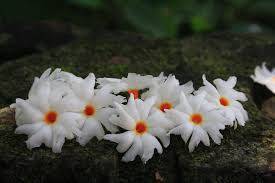Tyāgarāja's Darini telusukonti is my favorite kṛti in the rāga Śuddhasāveri. Many others have also composed songs in this rāga. In fact, there are several other compositions of Tyāgarāja in Śuddhasāveri but Darini telusukonti stands apart by its brilliance. The possibilities for elaboration of saṅgatis in this kṛti are tremendous. (Saṅgatis are the melodic variations of a lyrical phrase in a kṛti.) According to me, the calibre of a composer lies in the space he leaves for the delineation of various saṅgatis. Depending on his or her creative abilities, a musician can develop more and more saṅgatis. From this perspective, the possibility of developing saṅgatis in Tyāgarāja’s kṛtis stand testimony to his genius and understanding of music. Saṅgatis in music are akin to the different interpretations (sañcāris) of the lyrics in rasābhinaya of Indian classical dance. It serves as a good test of a dancer's calibre. If we were to give a literary equivalent, we could say that Darini Telusukonti is a combination of Bhāravi’s structure and Bāṇabhaṭṭa’s flowing imagination. Rāga Durgā does not have the heat and harshness of Śuddhasāveri. It is soft and melodious, compared to Śuddhasāveri. I remember listening to a rendition of Durgā by Pandit Ganapati Bhat Hasanagi while touring Badrinath and Kedarnath. That was a mellifluous experience. The extraordinary fast-paced piece "Bijan ban mein suman hai phool albela" filled my heart. My personal favourite is "Gagari mein kaise ley jaavu." As I have hinted, these compositions represent the loving grace of Durgā. While Śuddhasāveri can be compared to the rajo-guṇa of a matured nāyikā in her mode as a svādhīnapathikā, Durgā can be visualized as the display of softer emotions and sāttvila-bhāva of the same nāyikā. There are many film songs in Durgā. In the Kannada movie Anuradha, there's a Purandaradāsa song, Gummana kareyadire, sung by P B Srinivas and S Janaki. The Telugu movie Missamma has a song by M M Raja and P Susheela that goes: Brindavanmadi andaridi. It's a treat to listen to that song. And can one ever forget the title song of the movie Geet gaya patharon ne? With same arohaṇa (ascent of the scale) as Śuddhasāveri and with the addition of the svaras 'Ni' and 'Ga' in the avarohaṇa (descent of the scale), we get Ārabhi, yet another favourite of mine. Among the ghana-rāga-pañcaratna kṛtis of Tyāgarāja, my favourite are those in Ārabhi (Sadhinchane) and Śrī (Endaro mahanubhavulu). The contrast between these two rāgas is also interesting. Ārabhi is a Gamaka-varika-rakti rāga. Ārabhi is pleasing and dense at the same time. Though it is a rāga with rakti as an undercurrent, it is a ghana-rāga and has phrases meant for tāna. With its unique phrases, it is particularly suited to depict the emotions of vīra (heroic), adbhuta (wonder), and gambhīra (majesty). It can be a representative of the dhīroddhāta-nāyaka (a hero who is brave, smart and noble). For the bright start of a big event, it is ideal to render a Sanskrit verse in the śārdūlavikrīḍitam meter set to Ārabhi; verily akin to eating a Banana-bonda with filter coffee followed by Badam Halwa! Probably there is nothing else that can match this combination. The sublimity of the 'Suvarnamajjimamagga’ (सुवर्णमध्यममार्ग) as expounded by Buddha can be experienced by carefully listening to Ārabhi. Typically, a middle tempo suits Ārabhi best. Listening to the arohaṇa we experience devotion and confidence; the subtle and submissive 'Ni' and the humble 'Ga' in avarohaṇa though soften the rāga, add to its charm. This truly is a curious phenomenon in the world of music. The nyāsa (rest) of Ri-Pa and the vādi-samvādi combination of Ri-Da have contributed to the profoundity of the rāga. The deep kampita and jāru gamakas as well as the jaṇṭisvaras have made Ārabhi an asset of Carnatic music. Such rāgas are rare in Hindustani music. What is interesting, however, is that we find an other extreme version of a rāga like Ārabhi, such as Jaijaivanti in Hindustani music. Although the South Indian classical system has adapted it as Dvijāvanti, it is more suited to the North Indian style. The effect of catuśśruti riṣabha (Ri 2) in avarohaṇa reminds one of the humming of a bee in the spring season; this probably is the main thing that adds to the profundity of Ārabhi as compared to Śuddhasāveri. There are many compositions in Ārabhi, but Saint Tyāgarāja’s Sadinchane is particularly well-known. Here, the svaras interwoven with the kṛti, i.e. the ciṭṭesvara and the rhythmic patterns are extraordinary. The lyrics have ja-gaṇas (a long syllable with a short one before and after it) at appropriate places; it reflects the creative genius of Tyāgarāja and his understanding of prosody. Tyāgarāja’s composition in Śrī, Endaro Mahanubhavulu also has a similar lyrical pattern. The other three pañcaratna kṛtis do not have such a structure, possibly because the rāgas Nāṭa, Gauḻa, and Varāḻī don’t naturally go with such phrases. One has to realize the extraordinary musical sense of Tyāgarāja. Another Ārabhi kṛti is Tyāgarāja’s Chala kallalaadukonna, which exudes softness. These composition are like the contrast between the flow of a river in monsoon and in autumn. It flows at great speeds when it rains and is softer and more contained in autumn.
Adding the antara gāndhāra (Ga 3) to Durga gives us Pahāḍi. Often singers, especially in the Hindustani Thumri style, take the liberty of including other svaras as well, to enhance the effect of Pahāḍi. Many times Pahāḍi seems like Mohana sung in the madhyamaśruti or Miśra-Bilahari. Nevertheless the experience of listening to Pahāḍi is blissful. Wandering alone in the hills or enjoying the spring beside a natural stream, or a heroine longing to meet her lover, the dhīralalita of Mahārāja Udayana, fragrance of Jessamine and Parijata flowers, gentle life values of Gāthāsaptaśati, sweet memories expressed in Mandākrantā or Dhrutavilambita chandas: these are the moods that are evoked in me while listening to Pahāḍi and are hard to be captured by words. Be it a Lalgudi playing his own Tillana on violin or the Bansuri of Hariprasad Chaurasia, Pahāḍi played on an instrument sounds beautiful. But while listening to Mohammed Rafi sing “Chaudvi ka chand ho” or “Awaz de kaha ho” or P B Sreenivas and S Janaki singing “Shringaraleela sangeetalola,” the treasure of Pahāḍi’s melody gives us the impression that a vocal rendition is better. Listening to Kumar Gandharva, Ghantasala, P Susheela, Leela or Bhanumati render the rāga gives us a sublime feeling. Coming back to the grahabedha cycle, let us consider Śuddha-dhanyāsi. The notes in this rāga are Sa, Ga 2, Ma 1, Pa, and Ni 2. It is sometimes referred to as Udayaravicandrikā. In Śuddha-dhanyāsi Ma-Ni and Ga-Ni are mutually vādi-samvādi. Ni and Ga are the defining svaras. Śuddha-dhanyāsi, when elaborated with jāru gamakas gives beautiful phrases. Śuddha-dhanyāsi differs from Hindola by only one svara. Śuddha-dhanyāsi has a 'Pa' whereas Hindola has a 'Da.' In place of the sturdiness of 'Da,' we get the smoothness of 'Pa.' It kindles in us an unknown anxiety. This is similar to the state of Charudatta when he loses his riches and is reduced to poverty in Śūdraka's Mṛcchakaṭikam. Tyāgarāja’s “Entha nerchina” is profound but the lyrics aren't aligned to the mood of the rāga. In this respect, I like Dīkṣitar’s “Subramanyena Rakshitoham” more. The fulfillment felt amidst deep melancholy represents the rāga appropriately. While Muttayya Bhāgavatar’s “Himagiri tanaye” is a nice kṛti, the treatment of the rāga is a little light. Vāsudevācārya’s “Sri Hari Vallabhe” is praiseworthy, particularly due to its tempo; however, we observe a strong influence of Dīkṣitar; Bhāgavatar’s is a more original attempt. Śuddha-dhanyāsi is not a varika rāga. There is no scope for aggression. The Hindustani equivalent is also similar and is masked by the brilliance of Bhīmpalās. M S Subbulakshmi's rendition of “Narayana ninna namada” and “Bhavamulona” are close to my heart. Since this rāga is not very flexible, film music hasn’t used it as much. But a few songs have brought out its character of rich emotions: “Deva darushanava needeya” from the Kannada movie Hari Bhakta and “Kabhi Tanhayi” from Hamari Yaad Ayegi. The former is in the golden voice of Ghantasala while the latter is in the voice of Mubarak Begum. The attractiveness of Mubarak Begum’s melancholic voice and the steadiness of Ghantasala’s rendition are good examples of the respective musical styles. B N Reddy’s Rajamukutam, a retelling of Hamlet, had a song “Sadisiyeko gali” by P Leela and is the best creation in this rāga. It is certainly a soft, peaceful and moving composition. The phrases played on the clarinet as a part of the background music of this song is melodious too. With same arohaṇa as Śuddha-dhanyāsi and with the addition of Da 2 and Ri 2 in the avarohaṇa, we get Ābheri (Carnatic) or Bhīmpalās (Hindustani). We shall look into that next time.












































